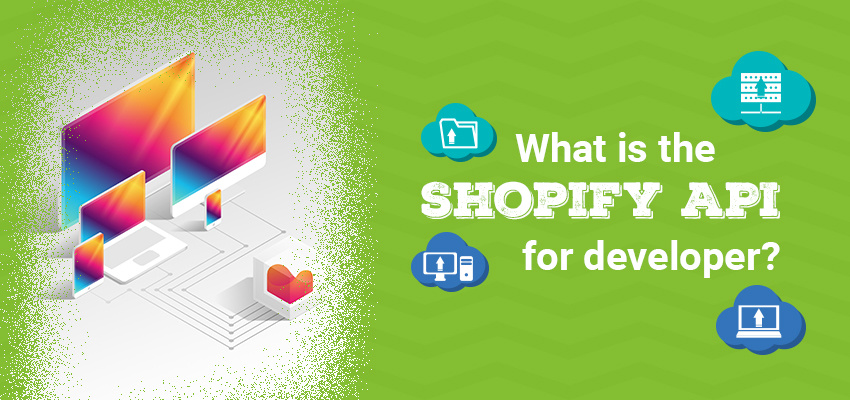Introduction
In today’s digital age, businesses must continuously adapt to stay ahead. For online retailers, leveraging technology to streamline operations and enhance customer experiences is essential. Shopify, one of the most popular e-commerce platforms, offers a powerful tool to achieve these goals: its API (Application Programming Interface). If you’re wondering, “Does Shopify have an API?”—the answer is a resounding yes. This blog will delve into the intricacies of Shopify’s API, its benefits, and how you can use it to optimize your e-commerce operations.
What is Shopify’s API?
Shopify’s API is a set of programming interfaces that allows developers to interact with the Shopify platform. APIs enable applications to communicate with each other, exchange data, and perform various functions. Shopify’s API provides a standardized way to access and manipulate data within the Shopify ecosystem, making it easier for businesses to integrate third-party applications and services with their online stores.
Types of Shopify APIs
Shopify offers several types of APIs, each serving different purposes:
- Admin API: This API allows developers to manage and interact with the Shopify store’s backend. It provides access to various resources, such as products, orders, customers, and inventory. Through the Admin API, you can automate tasks, manage store data, and create custom functionalities.
- Storefront API: The Storefront API is designed for building custom storefronts and enhancing the customer experience. It enables developers to access and manipulate store data related to products, collections, and customer information. This API is particularly useful for creating personalized shopping experiences and integrating with third-party frontend frameworks.
- GraphQL API: Shopify’s GraphQL API offers a more efficient and flexible way to query data compared to the traditional REST API. With GraphQL, you can request exactly the data you need in a single query, reducing the amount of data transferred and improving performance. This API is ideal for developers who want to build highly responsive and data-driven applications.
- Admin REST API: While GraphQL is becoming more popular, Shopify still provides a RESTful API for developers who prefer the traditional REST approach. The REST API allows you to interact with store data using standard HTTP methods and is well-documented for ease of use.
- Partner API: This API is tailored for Shopify Partners and developers who create apps and integrations for the Shopify ecosystem. It provides tools and resources to manage app submissions, track usage, and access partner-specific features.
Benefits of Using Shopify’s API
Integrating Shopify’s API into your e-commerce operations offers several advantages:
- Enhanced Customization: Shopify’s API allows you to customize various aspects of your store, from product listings to checkout processes. With the Admin API, you can create bespoke features and tailor the shopping experience to meet your unique business needs.
- Automated Workflows: Automation is key to efficient operations. By leveraging Shopify’s API, you can automate repetitive tasks such as order processing, inventory management, and customer notifications. This not only saves time but also reduces the risk of human error.
- Seamless Integrations: Shopify’s API facilitates seamless integration with third-party applications and services. Whether you need to connect with accounting software, CRM systems, or marketing tools, the API makes it possible to synchronize data and streamline workflows.
- Improved Data Management: Access to real-time data through Shopify’s API enables better decision-making. You can monitor sales, track customer behavior, and analyze trends to make informed business decisions and optimize your store’s performance.
- Enhanced Customer Experience: The Storefront API allows you to create personalized shopping experiences for your customers. You can build custom storefronts, implement advanced search functionality, and offer tailored recommendations to boost engagement and sales.
How to Get Started with Shopify’s API
Getting started with Shopify’s API involves a few key steps:
- Create a Shopify Partner Account: To access Shopify’s APIs, you need a Shopify Partner account. Sign up on the Shopify Partner website and create a new app or integration.
- Obtain API Credentials: Once your app is set up, you’ll receive API credentials, including an API key and secret. These credentials are required for authenticating API requests and accessing store data.
- Choose Your API Type: Decide which API best suits your needs. If you’re building a custom storefront, the Storefront API is ideal. For backend operations, the Admin API or GraphQL API may be more appropriate.
- Review API Documentation: Shopify provides comprehensive documentation for each API. Review the documentation to understand how to make API requests, handle responses, and manage data.
- Start Coding: Begin developing your integration using the API. You can use programming languages such as Python, Ruby, or JavaScript, depending on your preference and the requirements of your project.
- Test and Deploy: Thoroughly test your integration to ensure it works as expected. Once you’re satisfied with its performance, deploy it to your live store and monitor its functionality.
Common Use Cases for Shopify’s API
Here are some common use cases for Shopify’s API:
- Custom Checkout Experiences: Use the Storefront API to create a unique checkout experience that aligns with your brand. You can customize the checkout flow, add upsell options, and implement advanced payment options.
- Inventory Management: Automate inventory updates and sync stock levels with external systems using the Admin API. This helps ensure that your store reflects accurate stock availability and reduces the risk of overselling.
- Order Processing: Streamline order processing by integrating with third-party fulfillment services or automating order status updates. The Admin API allows you to manage orders, update shipping information, and handle returns efficiently.
- Customer Engagement: Build custom loyalty programs, referral systems, or personalized marketing campaigns using the Storefront API. Tailor your customer interactions based on their preferences and purchase history.
- Analytics and Reporting: Integrate with analytics tools to gain insights into your store’s performance. Use Shopify’s API to extract data, generate reports, and visualize key metrics to make data-driven decisions.
Conclusion
In conclusion, Shopify’s API is a powerful tool that can significantly enhance your e-commerce operations. By understanding the various types of APIs available and leveraging their functionalities, you can customize your store, automate processes, and integrate with other systems to create a seamless and efficient shopping experience. Whether you’re a developer looking to build custom solutions or a store owner seeking to optimize your operations, Shopify’s API offers the flexibility and capabilities needed to achieve your goals.














